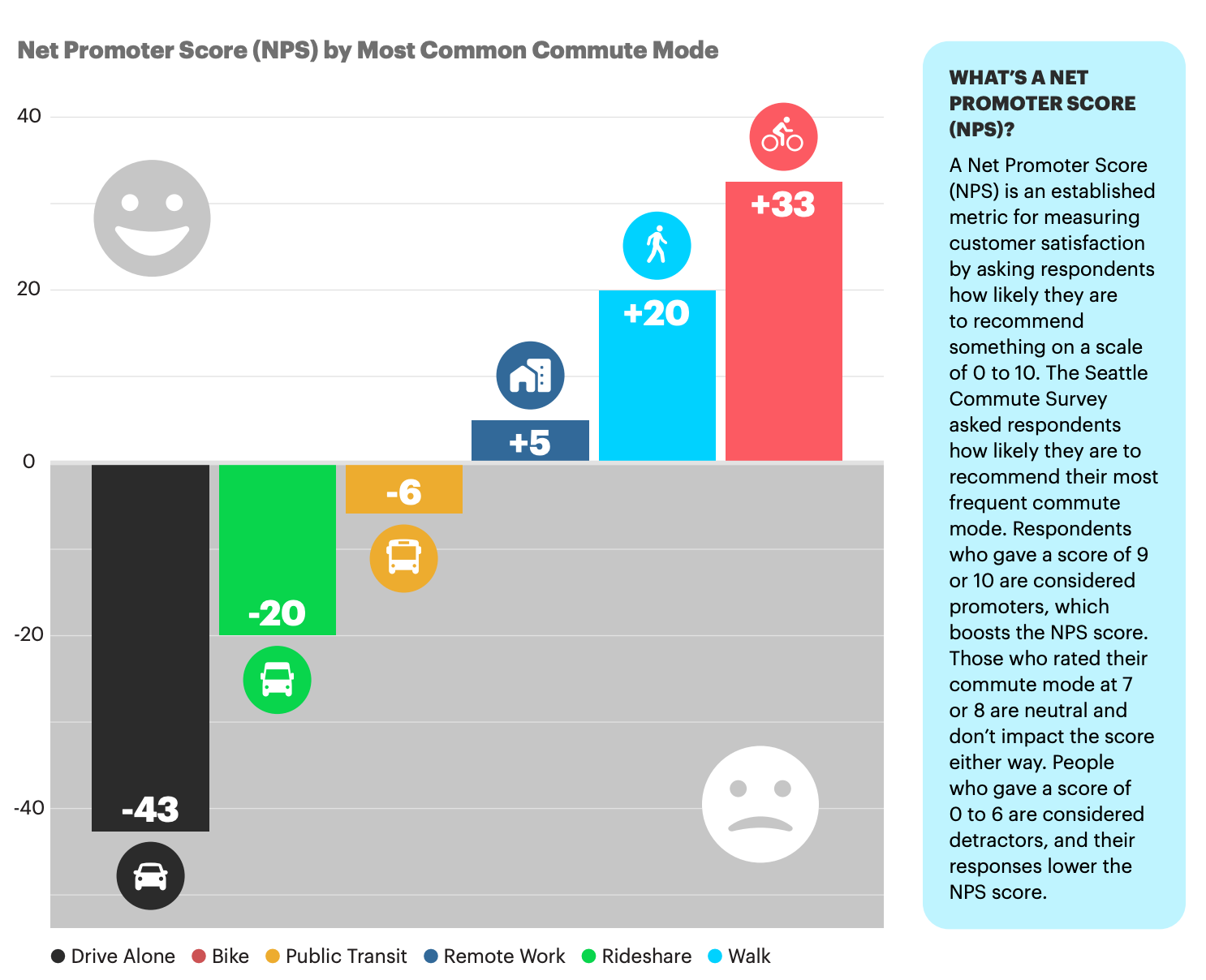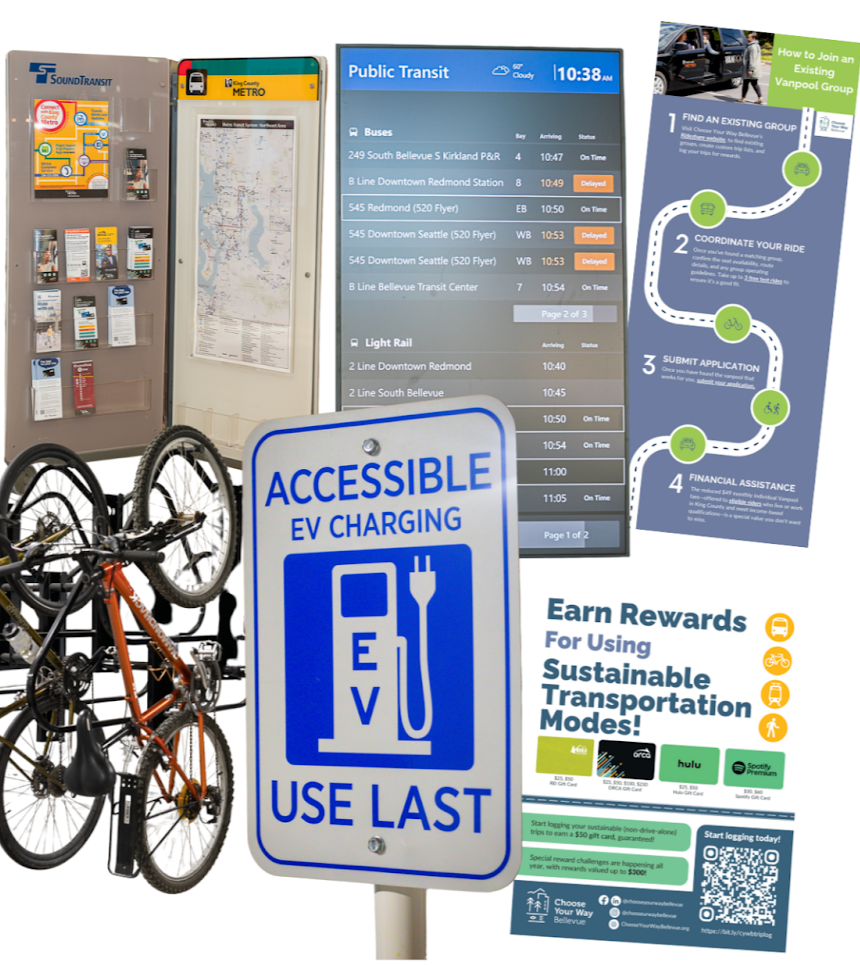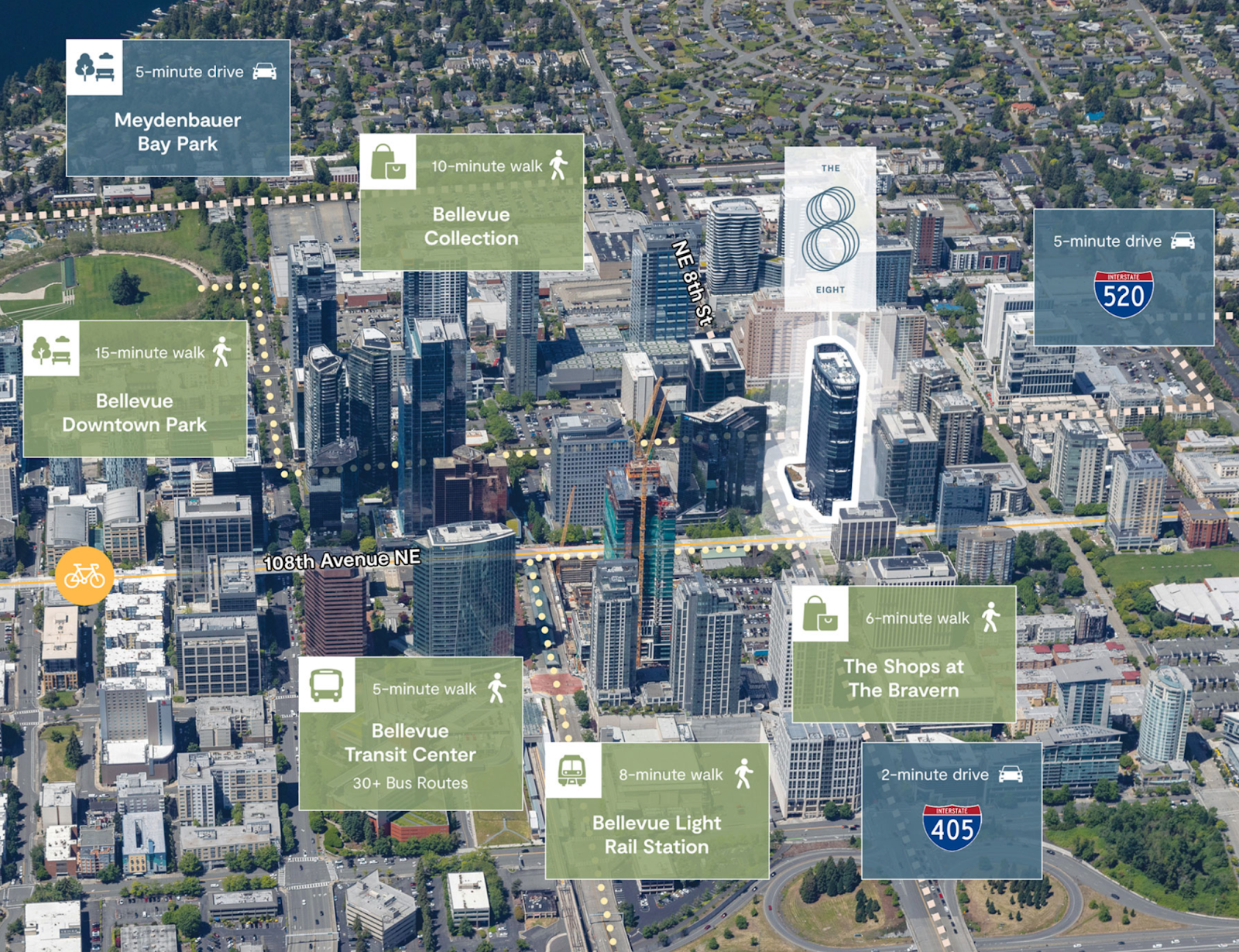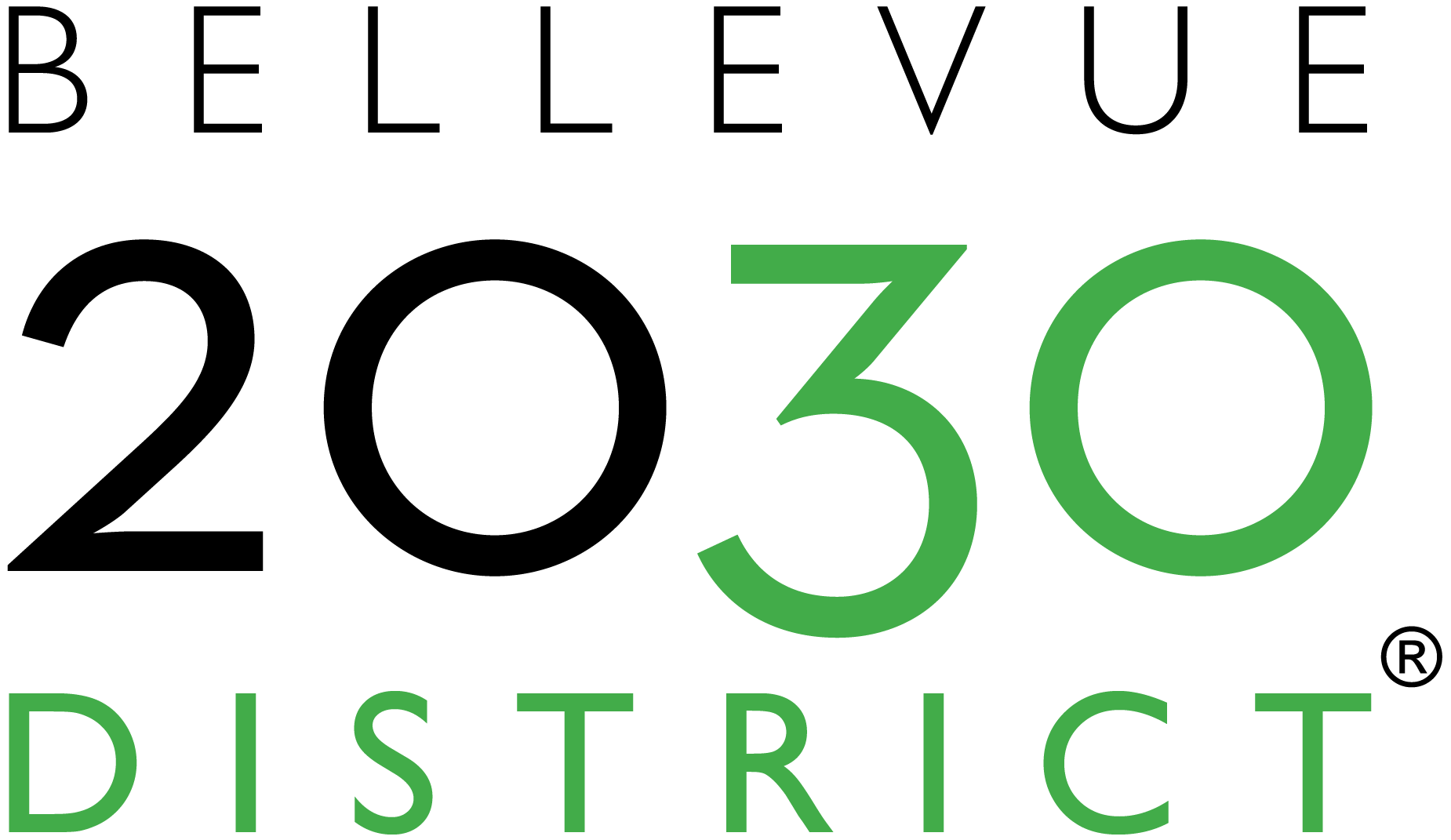The 2 Line light rail first opened on the Eastside in April 2024, expanded to Downtown Redmond in May of this year, and expects to connect to Seattle in early 2026. Initial months of ridership far surpassed expectations and anticipation for the I-90 train has the whole region buzzing.
Meanwhile, traffic congestion during rush hour has gotten exceptionally painful, costing the average Seattle driver 63 hours a year in 2024. For property managers, the question is no longer whether to adapt, but how.
The answer lies in embracing multi-modal access as a competitive differentiator. Buildings that support diverse commute options (transit, biking, walking, carpooling, and yes, driving) are outperforming those that rely solely on parking. In this Insight, we will share the best practices that leading properties are implementing.
Why Alternative Transportation Options Matter
Before diving into tactics, consider the business case. Recent census data shows 20% of Seattle households are now car-free, up from 16% in 2017. With 90% of Bellevue’s workforce commuting from outside the city, regional transportation preferences directly shape the tenant workforce.

Commute Seattle’s 2024 survey of more than 70,000 employees revealed that people who bike and walk report the highest satisfaction with their commute, indicating substantial tenant workforce demand for comprehensive transportation options beyond traditional parking.
With return-to-office policies now stabilized across most organizations, 30% of commuters identify transportation benefits as a key factor that would increase their satisfaction with current RTO requirements
The result? Access to alternative transportation options is now a key deciding factor for prospective tenants.

Best Practice #1: Right-Size and Optimize Parking
The Challenge: Structured parking averages $30,000 per space, quadrupling for underground construction. Most garages are priced well below market demand and annualized cost, subsidizing driving while leaving revenue on the table.
What to Do:
- Align pricing with demand: Charge rates that reflect true costs while remaining competitive
- Unbundle parking from leases: Allow tenants to opt out and reduce their footprint
- Implement priority parking: Reserve premium stalls for carpools, vanpools, and EVs at higher rates
- Convert surplus spaces: Transform underutilized areas into bike storage, EV charging stations, or tenant amenities
Bonus: Bellevue code allows developers to build less parking than the standard minimum when a commissioned parking study shows the reduced amount will still meet demand, often achieved by a robust suite of trip-reduction measures.
Best Practice #2: Invest in Premium Active Transportation Infrastructure
The Challenge: Class A tenants increasingly expect bike amenities on par with other building features.
What to Do:
- Secure, climate-controlled bike rooms with adequate capacity (consider 5-10% of tenant headcount)
- Maintenance stations with basic tools and air pumps
- E-bike charging capabilities with standard outlets or dedicated charging stations
- Executive shower and locker facilities that professionals feel comfortable using before meetings
- Clear wayfinding from bike storage to elevators and showers
Why It Matters: Properties prioritizing active transportation generate measurable value uplift while delivering lasting community benefits.
Best Practice #3: Facilitate Transit and Shared Mobility Programs
The Challenge: Many tenants don’t know about available programs or how to access them.
What to Do For Transit:
- Consider offering + distributing materials about the ORCA Business Passport, which provides unlimited regional transit access for $169-$398 annually per employee, far less than the retail cost of $1,200+ or the $3,000+ annual cost of downtown parking

- Install digital transit displays showing real-time arrival information
- Coordinate information sessions with local TMAs: Commute Seattle, Connect Bellevue, or Move Redmond
What to Do For Vanpools and Carpools:
- Promote King County Metro’s Vanpool program, fully covered by ORCA Business Passport, with 150+ vans currently serving Bellevue
- Share RideShare Online matching tools and existing guides
- Host periodic carpool formation events in your lobby or common areas
Best Practice #4: Market Your Multi-Modal Connectivity
The Challenge: Buildings invest in transportation options but fail to communicate them effectively.
What to Do:
- Highlight multi-modal connectivity like Skanska’s The Eight, which opened in 2025 and prominently features walking paths, transit centers, and bike lanes alongside driving distances on its website
- Create transportation info sheets for prospective tenants showing transit lines, bike routes, parking options, and walkability scores
- Include in tenant onboarding materials about building transportation amenities and available programs
- Feature transportation in ESG reporting to support corporate tenant sustainability goals

Best Practice #5: Measure and Communicate Results
The Challenge: Without metrics, you can’t demonstrate ROI or optimize programs.
What to Do:
- Track parking utilization rates to identify conversion opportunities
- Monitor mode split changes among building tenants
- Survey tenant satisfaction specifically about commute options
- Calculate cost savings from reduced parking infrastructure needs
- Document faster lease-up times and improved retention rates
Share results with ownership, prospective tenants, and in sustainability reports. Commute Seattle’s 2024 CTR report demonstrates that employees consistently rank commute flexibility as a top workplace satisfaction factor, one that can be addressed by a building’s offerings.
Common Pitfalls to Avoid
- Don’t price parking below true cost – This subsidizes driving and undermines alternative mode adoption
- Don’t reduce parking without offering alternatives first – Ensure the multi-modal options are there before cutting spaces
- Don’t assume tenants know about programs – Active communication and facilitation are essential
- Don’t skimp on bike amenities – Half-measures (outdoor racks only, no showers) won’t shift behavior
The Road Ahead
Bellevue’s transportation landscape is evolving rapidly with light rail expansion, rising congestion, and the FIFA World Cup and Revive I-5 closures approaching. Properties implementing these best practices now will capture disproportionate value from public transit investments while becoming destinations of choice for quality tenants.
Multi-modal access has shifted from nice-to-have amenity to essential competitive strategy. The buildings that embrace this reality, through optimized parking, premium active transportation infrastructure, systematic transit support, effective marketing, and rigorous measurement, will define the next generation of successful office properties.
Special thanks to: Mike Ingram, senior transportation planner for the City of Bellevue, for insights on city code and parking requirements and Commute Seattle for their comprehensive 2024 Commute Survey and Report.
About the Author

Mackenzie McDonald is the Transportation Demand Specialist for Connect Bellevue, where she leads initiatives that expand sustainable transportation options across the city. She works with employers, property managers, and residents to promote commuting solutions that reduce congestion and emissions while improving accessibility. Mackenzie is dedicated to helping the community adopt cleaner, more efficient travel choices that support a vibrant, connected future.

